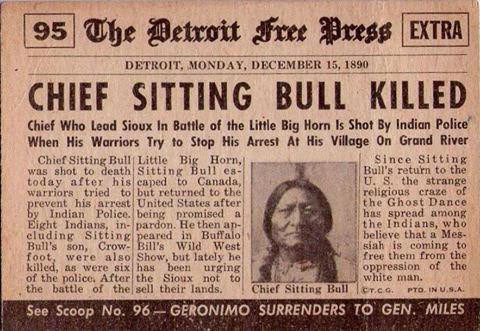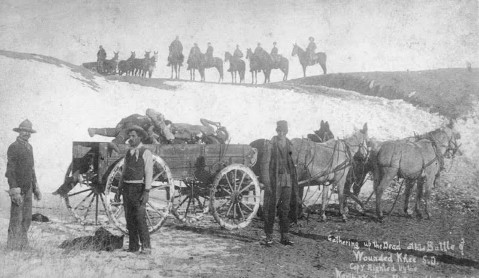Chief Sitting Bull and Standing Rock

Today is the 126th anniversary of the killing of Chief Sitting Bull in 1890 on the Standing Rock reservation in present-day North Dakota.
Sitting Bull’s death came in the midst of a national hysteria over the rise of an Indian spiritual practice called the Ghost Dance. The Ghost Dance was part of a nonviolent movement (which included Christian overtones of the Resurrection) that prophesied the end of manifest destiny, a halt to the westward expansion of settlers, and a return of Native lands.
While there is no evidence that Sitting Bull was a practitioner of the religion, U.S. President Benjamin Harrison ordered the Army to forcibly suppress the Ghost Dance. The Indian police — personally hostile to Sitting Bull’s clan and now authorized under military orders — were sent to capture him.
In his inaugural address a year earlier, President Harrison famously declared that as a Christian nation, the United States would require Indians to convert to Christianity and that all Native religions would be actively suppressed.
After Sitting Bull was killed, a chief named Big Foot, who in fact was a practitioner of the Ghost Dance, fled with 300 followers toward the Pine Ridge reservation in present day South Dakota. Pursuant to the presidential order, General Nelson A. Miles dispatched 5,000 troops in below-zero weather to capture the religious refugees.
On December 28, 1890, a reorganized band of General George Armstrong Custer’s 7th Cavalry, still smarting from defeat at the Little Big Horn 14 years earlier, caught up with Big Foot and the others near a place called Wounded Knee.
The massacre took place the following day.

The Ghost Dance was not performed in public again until 1973, when Lakota medicine man Leonard Crow Dog enacted it during the 71-day siege at Wounded Knee. Earlier this month, Crow Dog was asked to accept an unprecedented apology from veterans on the Standing Rock reservation, not far from the place where Sitting Bull was killed on this day in history.



